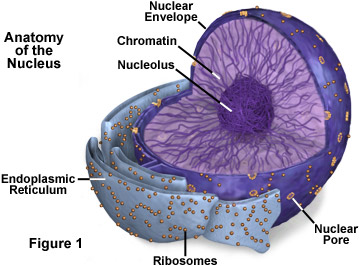1. Identify the 3 principles of modern cell theory
-All organisms consist of one or more cells.
-The cell is the basic unit of structure for all organisms.- All organisms are composed of cells.
-All cells arise only from preixisting cells.
2. Explain the factors that limit the size of a cell
The ration of volume to cell surface is the biggest factor. If the cell gets too big, it will take too long to transport necessary molecules form the cytoplasmic mebrane or nucleus out to the environmment or vica versa. The size is usually per-determined by genes encoded in the DNA.
3. Explain the differences between eukaryotic and prokaryotic cells.
Eukaryotic cells are more complex with specialized organelles, while Prokaryotic cells are more simple that lack a nucleus, and any other membrane bound organelles. For example bacteria are prokaryotic organisms animals and plants are eukaryotic.
4. Relate the structure to the function of the nucleus in eukaryotic cells.
- The nucleus contains the DNA. It is the site for replication and transcription; the most important processes of a cell.
-Attached to the nucleus's outside membrane, there are the ribosomes (found free in Cytoplasm and on the Rough endoplasmic reticulum, creating the rough texture)
-The nuclear envelope encloses the genetic material
5. Describe the differences and similarities in membrane structure in various organelles
The ultimate purpose of a membrane is the same in all organelles, like the whole cell membrane seperates the interior of the cell from the outside environment in the organism. The cell membrane is selectively permeable to organic molecules, ions and controls the flow of substances in and out of the cell. Compared to the endoplasmic reticulum is an extensive membrane network of lace like cisternae ( flattened membrane disks that make up the golgi apparatus). The endoplasmic reticulum is an extensive membrane network of cisternae held together by the cytoskeleton.
6. Explain the relationship between the endoplasmic reticulum and the golgi apparatus
Rough ER has ribosomes attached to it and is an extensive network of folded membranes with interconnected tubes and sacs. After ribosomes synthesis proteins, the proteins are transported through the rough ER. The proteins are enclosed in a vesicle and then transported to the Golgi apparatus where the processing, packaging and transport of protein is done. After the protein is processed, it will bud off from the Golgi apparatus as vesicles and be transported to the place where it is needed.
7. Trace the path of food particles from the outside of the cell would take to the mitochondrion where it is metabolized
Particles will enter the cell through the cell membrane, floats around in the cytoplasm where it is then brought to the mitochondria. Inside, the whole purpose is to break down the particles into ATP (cell food/energy) so the cell has enough energy needed to live.
8. Explain the origins of mitochondria and chlorplast using the endosymbiotic hypothesis
The endosymbiotic theory involves the mitochondria, chloroplast, and possibly other organelles of eukaryotic cells. According to this theory, certain organelles originated as free-living bacteria that were taken inside other cell as endosymbionts (any organism that lives within the body or cells of another organism.) Mitochondria developed from proteobacteria (major phylum of bacteria) and chloroplasts from cyanobacteria (phylum of bacteria that obtain energy from photosynthesis- algae)
9. Discuss the various ways that cells support themselves and maintain a recognizable shape and form
Cells support themselves in different ways that ultimately create the shape of the entire cell. For example plant cells have rigid green cell walls that support the whole rectangular shape of each cell. In animal cells, the cytoskeleton serves as the skeleton for the "body" of the cell.
10. outline the various ways in which cells conduct the internal movement of materials and structure from one place to another
A flagellum (tail-like structure that protrudes from the cells body) occurs in certain prokaryotic and eukaryotic cells, and allows cells to move.



No comments:
Post a Comment